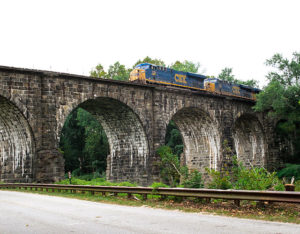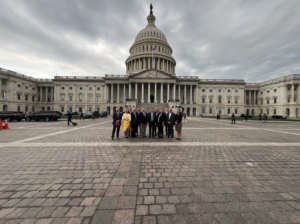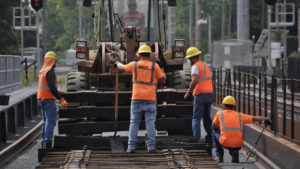Wisconsin DOT secretary pushes passenger rail
Written by Administrator(This article by Frank Busalacchi was published by the Milwaukee Journal Sentinel. He is chair of the States for Passenger Rail Coalition and secretary of the Wisconsin Department of Transportation.)Everyone who travels the nation's roads, bridges and rails has a stake in a major project under way in Congress this year: the reauthorization of the country's surface transportation law. This mammoth law, rewritten every six years, determines how much money will be available to maintain and expand the country's transportation system. Moreover, the legislation determines how this huge pot of money -- $286.5 billion in the last bill -- will be spent.As chair of the States for Passenger Rail Coalition and secretary of the Wisconsin Department of Transportation, I strongly urge Congress to revisit our transportation priorities, which for too many years have favored highways and airlines. It's time to reinvest in a highly valuable and underused transportation mode: intercity passenger rail service.The reasons for spending more on rail are many. Perhaps the most important reason is public demand. Travelers are voting for more intercity passenger rail service by boarding trains in record numbers. In 2008, Amtrak carried a record 28.7 million passengers -- the highest number in the passenger railroad's history. When gasoline prices broke the $4-a-gallon barrier last summer, increasing numbers of travelers changed their travel plans to rail, including nearly 900,000 travelers in Wisconsin.Price alone is not the only reason many travelers are switching to rail. Growing congestion on our nation's highways and increasing delays in the air are making rail an attractive option for millions.Of course, as more people choose to travel by rail, the demand on the system rises. Amtrak is facing an unprecedented equipment shortage: 17 percent of Amtrak's locomotives and 15 percent of its passenger fleet are out of service. Investment in track and signal infrastructure is needed now to deal with existing rail congestion and to add new passenger rail service for the future.In the midst of an economic recession, investing in rail is a wise use of federal dollars. It is estimated that for every $1 billion invested in passenger rail projects, 30,000 new, good-paying jobs are created. In Wisconsin, Amtrak pays $4.3 million annually in wages.Last year, I had the pleasure of serving on the National Surface Transportation Policy and Revenue Study Commission. The commission's most significant finding illustrated the financial magnitude of the need: $357.2 billion in capital improvements required by the year 2050. Additionally, a commitment of $5 billion per year will be needed for the 80/20 federal rail grant program over the six-year reauthorizing period.This important program provides 80 percent federal and 20 percent state funding for passenger rail projects, mirroring the funding split in highway projects. This funding split finally recognizes the importance of passenger rail in our national transportation system. The commission also identified a series of inherent advantages in passenger rail that further demonstrate the value in greater funding for this important transportation mode. Chief among them are:Mobility: Intercity passenger rail offers an alternative to using the private automobile, bus or airplane for transportation. At the current average of 2.2 million monthly riders, this means that several million people every month are removed from the already overcrowded roadways and airports.System redundancy: Intercity passenger rail creates system redundancy in the intercity corridors it serves. Redundancy helps to ensure that transportation is possible even when an event occurs that disrupts the primary transportation system.Delay reductions: One of the potential benefits of intercity passenger rail service is reduced highway congestion. In congested corridors, intercity passenger rail would only have to capture a small share of the total traffic in order to generate a substantial public benefit for all corridor travelers.Environmental: Intercity passenger rail may also generate potential health benefits by reducing vehicle emissions, lowering pollution, and indirectly mitigating health and environmental costs.Safety: Passenger rail is one of the safest modes of travel -- far safer than highway travel.The reasons to invest more in passenger rail are compelling and in the national interest. The question is whether Congress has the will to take a fresh look at the nation's surface transportation system and increase funding for rail -- the transportation mode that moves people efficiently while reducing the burden on our congested highways and airlines.





